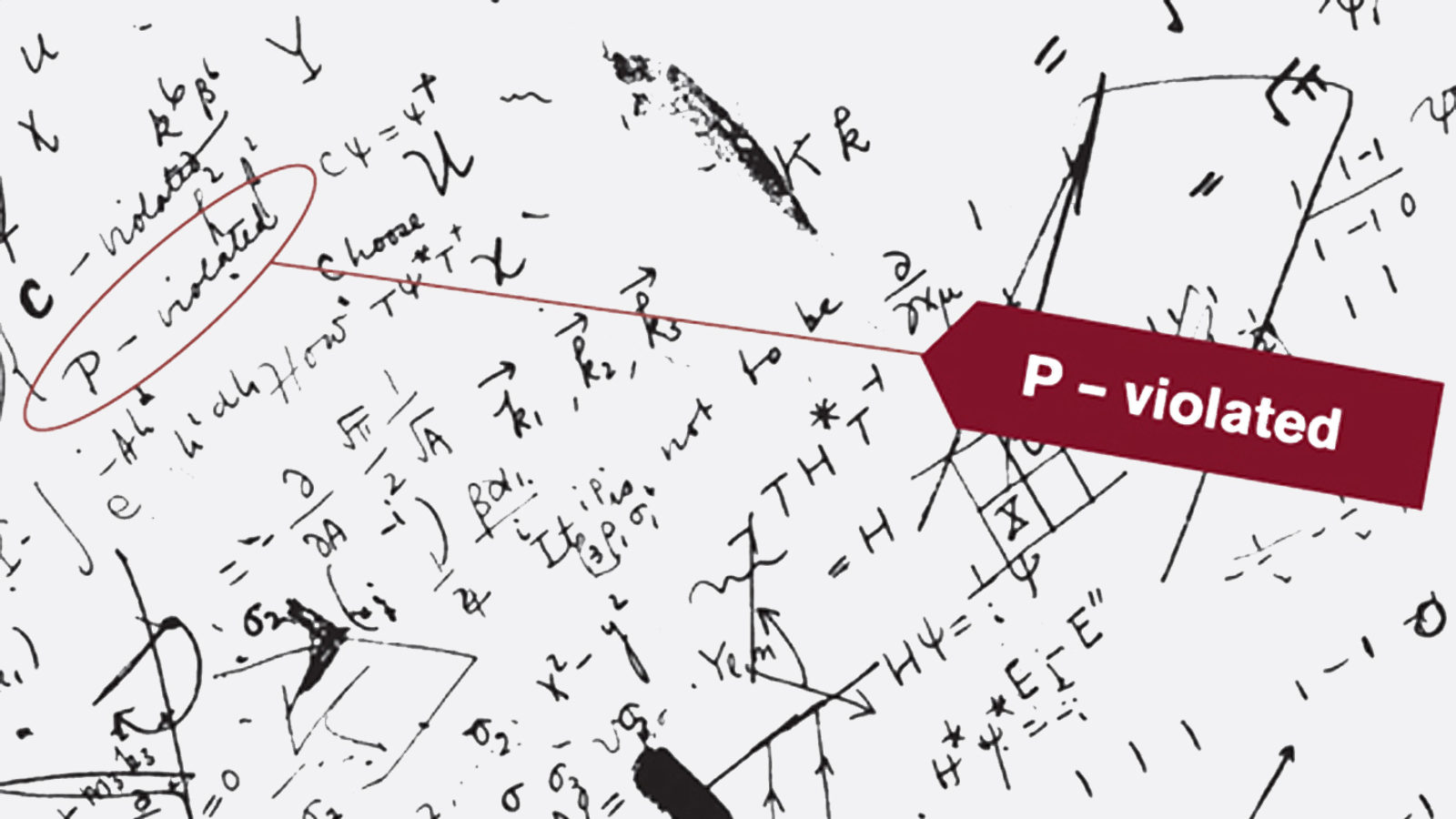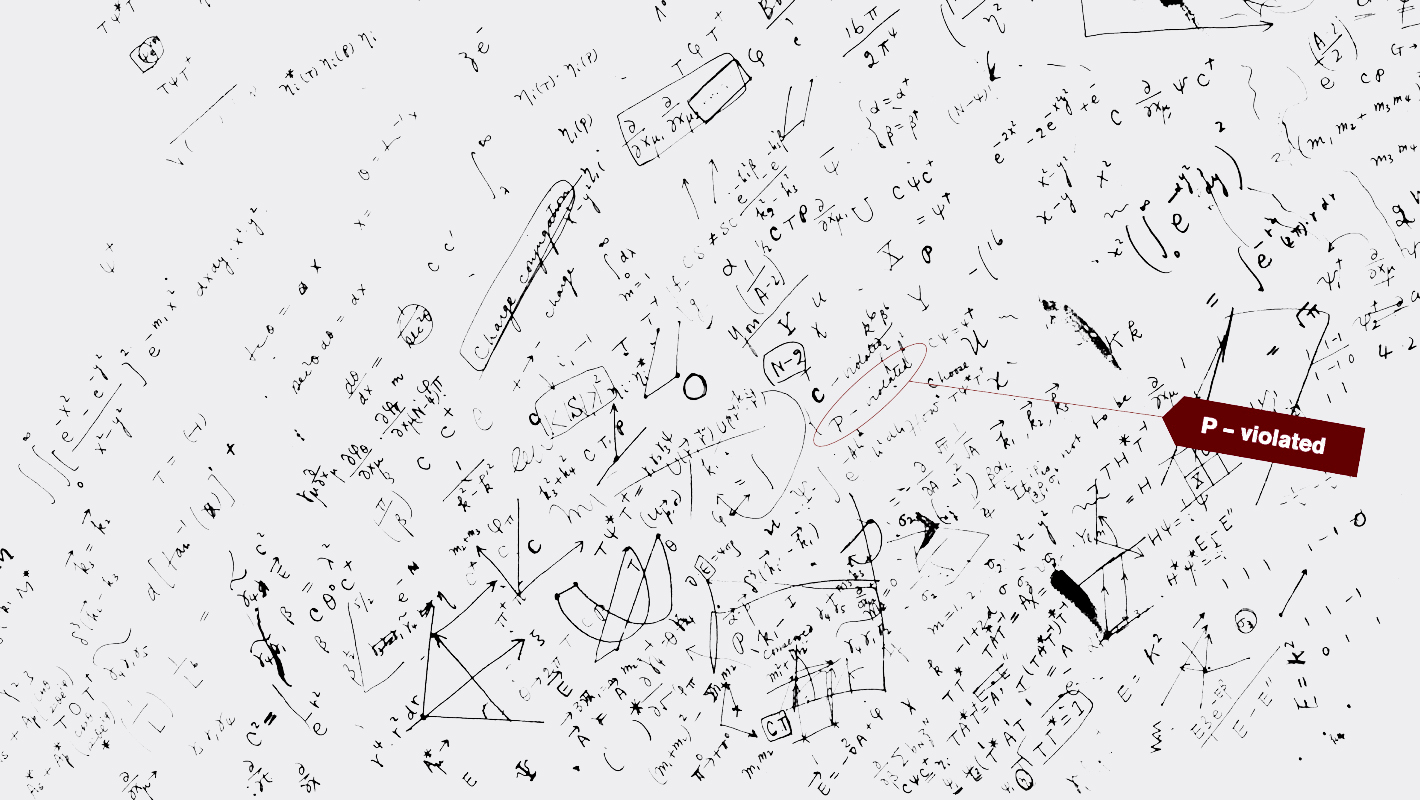The two theoretical physicists, both Chinese emigrants, frequent collaborators, and long-time friends, met twice a week to break down a fundamental and supposedly absolute law of physics known as parity conservation.
Parity is a type of symmetry encountered in nuclear and particle physics. It is denoted by the symbol "P," scribbled throughout the researchers' note pad. Parity is conserved when the laws of physics for a system of elementary particles remain the same if the positions and directions of all the particles are reversed. Physicists once believed that nature was always symmetrical with respect to such a transformation, making parity conservation a welle-stablished principle in the field.
But major theoretical problems were posed by two tiny particles: tau and theta (τ and θ, also prevalent in the researchers' notes). Apparently identical in their masses, lifetimes, and scattering behaviors, these particles differ only in the way they decay—the theta particle changes into two subatomic particles called pions, while the tau becomes three pions. One possible explanation for this imbalance assumed that tau and theta were actually two different decay modes of the same particle. If this were the case, however, parity could not be conserved.
Lee and Yang investigated this scientifically controversial idea by examining experimental data from Brookhaven's Cosmotron particle accelerator along with literature from almost 40 years of research. They found that although there was a great deal of support for parity conservation in numerous physical processes, there was no evidence in processes mediated by the so-called "weak interaction," one of the four fundamental forces of nature.
That summer, Lee and Yang submitted a short paper to Physical Review, formally raising the question of whether parity is conserved in weak interactions and suggesting several experiments to decide the issue. Soon after, studies in various labs showed that the two particles could indeed be the same, proving the young researchers' theory. Lee and Yang went on to win the 1957 Nobel Prize in physics for setting the stage for this revolutionary discovery.








